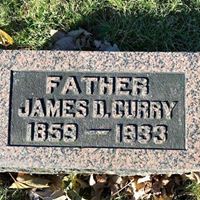
Building Remembrance for Reconciliation gratefully acknowledges the historical research of Heidi Langenfeld. Much of Hastings Black history information is the result of her diligent work and pursuit of absolute accuracy of the facts. Heidi Langenfeld’s narrative style adds interest and depth to the history of Hastings Black community.
A Four-Part Black History Month Series
blacks-in-hastings_gazette_part-1 February 1, 2018
Brown’s Chapel-Hastings
On December 26, 1891, The Hastings Gazette published a letter to the editor written by J.C. Anderson providing background to the newly formed African Methodist Episcopal Church. He explained that they had been meeting as a congregation in a private home and then rented rooms on the upper floor of the Hanson’s block for over a year, he wrote: “Experience has taught us the necessity of having a place of our own, where we may become permanently situated, and worship God according to the dictates of our own consciences without shame or fear.”
The church was officially known as Brown’s Chapel African Methodist Episcopal Church of Hastings, and the original board included J.C. Anderson, chairman, and trustees Henry St Clair, John Wallace, James D Curry, and James Wallace.
He ended the letter with a request for financial support from the community to accomplish their goal of raising $200.00 for a down payment. The funds were raised and on Saturday, July 16,1892 an article in Hastings Gazette announced, “The colored people of Hastings and vicinity are making great preparations for the opening of Brown’s Chapel on the corner of 5th and Sibley on Sunday. The people of Hastings, of whatever religious opinion, are requested and cordially invited to attend.” Brown’s Chapel opened Sunday, October 17, 1892.
On October 31, 1907, the Hastings Democrat carried this news: “Fire!! The ringing of the fire bell on Friday evening called out the fire department, when it was ascertained that the African Methodist Church was on fire, and through their efforts the fire was promptly extinguished.

“Upon investigation it was found that an entrance had been affected by someone through a back window by cutting the screen and raising the sash. There were indications where kerosene had been poured over the floor, pews and elsewhere in the building so that there is no doubt that it was the work of an incendiary.” November 2, 1907 Hastings Gazette reported: “Brown’s Chapel — The African Methodist Church on Fifth Street was discovered on fire Monday evening, the work of incendiaries. The woodwork had been saturated with kerosene, and a blaze started. The floor was ruined, most of the pews badly charred, the walls and ceiling blackened, and the windows broken. The department turned out, and by their prompt efforts the building was saved. There was no insurance.”
Both papers agreed the fire was the work of incendiaries but reported different days that it occurred. No newspaper articles have been found that report an investigation into who started the fire. Two years following the fire it was reported that Brown’s Chapel had been sold to Michael Graus for $300.00.
Curry Woods Scattering Garden Dedicated at Lakeside Cemetery
Lakeside Cemetery announced the opening of the Curry Woods Cremation Scattering Garden on May 24, 2017. A scattering garden allows for above ground distribution of cremation remains. The Curry Woods Scattering Garden provides a lovely setting to scatter ashes while preserving records of your loved one for generations. Families may also choose to inscribe their loved one’s name on a scattering garden monument. The Curry Woods Garden is situated under a canopy of trees and the gardens will be planted with hardy evergreen perennial ground cover.
Who is James Curry?
Local historians believe James was born the son of slaves in 1859. Energetic, resourceful, and engaging, he was a beloved member of Hastings’ Black pioneers. He was one of the founding members of Brown’s Chapel in Hastings, the African Methodist Episcopal Church. When he died in 1933, businesses and schools closed in his honor and his body lie in state in city hall. James and his wife are buried at Lakeside as are several other Black pioneers and civil war veterans.

Why name the scattering garden after James Curry?
As a place for remembrance, Lakeside strives to provide a beautiful place for families and the community to honor and remember loved ones. James Curry’s story is not well remembered. The Board of Trustees felt that James was deserving of this honor and the community would benefit by learning more about him. In the 1880’s a Lakeside board member proclaimed that the work of the cemetery is to “honor the dead and be a credit to the living.” Words we live by still. Learn more about James Curry from the cemetery’s self-guided walking tour.
The Story of the Ku Klux Klan in Hastings
The Hastings Gazette August 29, 1925 headline read: “200 Klansmen Parade, Hold Meeting Here.” The article reports “Rumors that Ku Klux Klan delegations, in large numbers, were scheduled to parade the streets of Hastings Saturday evening, proved authentic when a white-robed procession of more than two hundred Klansmen formed on the outskirts of the city and marched through the business district, proceeded by two of their members on horseback.
The Klans meeting followed the parade at a vacant field near the King Midas Mill. Mounted members of the Klan patrolled the outer edge of the field to prevent spectators from getting too close, while policemen acted as traffic officers. A huge cross was erected in the center of the field. Mayor H.A. Sieben and a policeman were escorted from the grounds by Klansmen following a brief controversy over the burning of the cross. The mayor informed the Klan that the fire department, which was summoned to the scene, was under orders to extinguish the burning emblem, and that the orders would be complied with. The Klansmen made no attempt to burn the cross after receiving the mayor’s orders. The Klansmen left the grounds in an orderly procession after the meeting and proceeded to the Cook farm south of Hastings where the cross was set ablaze as part of their ceremony.
The Gazette reported “an unfortunate brawl” developed between supposed Klan sympathizers and anti-Klansmen after the robed delegation had left the meeting vicinity. No charges were filed.
A letter to the Editor of the Tribune signed A Country Klansman describes the event that took place on Saturday night, August 22, 1925, in Hastings as “perhaps its greatest thrill.” His letter documented the program that began with the singing of “America” and a prayer offered by Rev. William E. Thompson. Thompson also offered his thanks to “the knights and ladies for their interest in the moral welfare of Hastings…” He outlined the principles and plans of the movement and “especially defended the K.K.K. from slurs cast at them as inciters of mob violence and riots and called attention to the demonstration of interference by the officials of Hastings as an example of all the disturbances that have been chronicled by the subsidized press and which is worse have been swallowed as pure gospel by so many misguided people.”
The writer also wrote that Thompson told the group that the officers of the law and officials of the city would find in the K.K.K. the best friends of law and order on whom they might call for any assistance needed, and he pleaded for a drastic enforcement of the Eighteenth Amendment (prohibition) to the Constitution of the United State of America. This writer signed A Country Klansman also reported an attempt was made to “wrest” the cross from an automobile as it was leaving the grounds but the Klansmen “foiled the hoodlums.” The writer also stated the cross was later erected outside the city limits where it was lit on fire. In closing, he predicted “that there would be a large increase in membership of the local unit of the Knights of the Ku Klux Klan because of the affair.”
July 2, 1926 an article appeared in the Hastings Gazette and the headline read: “Klan Gathers at Sorg Farm. Biggest Assembly of Hooded Order Ever Staged in This Vicinity is Held at Nininger. 800 Cars Parked at Farm.” Reportedly, there were approximately 1,200 Klansmen and spectators; the Klansmen wore their robes and hoods but were unmasked. The assembly included a speaker, Pat Malone of Menominee, who addressed the Klansmen from the porch of Carl Sorg’s farmhouse and a prayer at the close of the meeting by Rev. W. E. Thompson, formerly the pastor of the Methodist Church.
Census Information: Population in Hastings
The first census of Minnesota Territory was taken in 1857. Hastings had 1,983 residents, including one Black resident, Robert S. Burns a single 32-year-old barber from North Carolina. The 1870 census recorded 40 Blacks in a population of 3,458 settlers. In 1880 that number had decreased to 24. In 1890 the population was 3,705 with 34 Black residents, 14 of this number were the Wallace and Curry families. In 1920 Blacks numbered 10 in a population of 4,670. The Wallace and Curry children left Hastings following graduation from High School and settled in a South Minneapolis neighborhood. January 22, 1954 the Hastings Gazette printed, “Henry Thomas, 74, this city’s only Negro resident, died of a heart attack.’
Ninety-seven years spanned the period between Robert Burns and Henry Thomas in Hastings. During that time members of the colored race had fought for their freedom and then their rights as citizens, had celebrated the victory of obtaining those rights and joined in learning more about becoming good citizens. They dreamt of and organized their own church to worship God according to their consciences without shame or fear, only to have it destroyed by arson. They watched their children attend and excel in scholarship and sports. Many worked, died, and were buried in Hastings, but their children chose to pursue their own dreams where there were more opportunities for themselves and their children.
Census information for Hastings in 2017 lists a population of 22,620, of which 294 are Black or African American. https://datausa.io/profile/geo/hastings-mn#demographics